- Home
- Mark Twain
Autobiography Of Mark Twain, Volume 1 Page 5
Autobiography Of Mark Twain, Volume 1 Read online
Page 5
The Florentine Dictations (1904)
During his eight-month stay in Florence Clemens made unusual progress on the autobiography, in large part because of a renewed enthusiasm for dictation as a method of composition. He had experimented with mechanical methods of transferring words to paper ever since the dictations to Redpath in 1885. In 1888 he tried (and failed) to get access to one of Thomas Edison’s recording phonographs.48 Then in 1891 he suffered an attack of rheumatism in his right arm and, compelled by the necessity of working on his current book (The American Claimant), he did briefly experiment with the phonograph. “I feel sure I can dictate the book into a phonograph if I don’t have to yell. I write 2,000 words a day; I think I can dictate twice as many,” he wrote to Howells on 28 February. But by 4 April he had concluded that the machine “is good enough for mere letter-writing” but
you can’t write literature with it, because it hasn’t any ideas & it hasn’t any gift for elaboration, or smartness of talk, or vigor of action, or felicity of expression, but is just matter-of-fact, compressive, unornamental, & as grave & unsmiling as the devil. I filled four dozen cylinders in two sittings, then found I could have said about as much with the pen & said it a deal better. Then I resigned. I believe it could teach one to dictate literature to a phonographer—& some time I will experiment in that line.49
His expectation in December 1900 of relying on Jean to type up dictated autobiography at last became a reality in January 1904, when he tried dictating once more, but not to a machine. According to Isabel Lyon,
About January 14, Mr. Clemens began to dictate to me. His idea of writing an autobiography had never proved successful, for to his mind autobiography is like narrative & should be spoken. At Mrs. Clemens’s suggestion we tried, and Mr. Clemens found that he could do it to a charm. In fact he loves the work. But we have had to stop for he has been ill, Mrs. Clemens has been very ill, & I too have taken a weary turn in bed.50
Lyon did not know shorthand and so took down Clemens’s words in full, then gave Jean her record to be typed. Shortly after he had begun to dictate, Clemens wrote to Howells on 16 January:
I’ve struck it! And I will give it away—to you. You will never know how much enjoyment you have lost until you get to dictating your autobiography; then you will realize, with a pang, that you might have been doing it all your life if you had only had the luck to think of it. And you will be astonished (& charmed) to see how like talk it is, & how real it sounds, & how well & compactly & sequentially it constructs itself, & what a dewy & breezy & woodsy freshness it has, & what a darling & worshipful absence of the signs of starch, & flatiron, & labor & fuss & the other artificialities! Mrs. Clemens is an exacting critic, but I have not talked a sentence yet that she has wanted altered. There are little slips here & there, little inexactnesses, & many desertions of a thought before the end of it has been reached, but these are not blemishes, they are merits, their removal would take away the naturalness of the flow & banish the very thing—the nameless something—which differentiates real narrative from artificial narrative & makes the one so vastly better than the other—the subtle something which makes good talk so much better than the best imitation of it that can be done with a pen.
It seems that he recognized Lyon’s lack of shorthand as an advantage, for he went on to urge Howells to try this method, but “with a long-hand scribe, not with a stenographer. At least not at first. Not until you get your hand in, I should say. There’s a good deal of waiting, of course, but that is no matter; soon you do not mind it.” More important even than the leisurely pace was the scribe’s role as audience: “Miss Lyons does the scribing, & is an inspiration, because she takes so much interest in it. I dictate from 10. 30 till noon. The result is about 1500 words. Then I am a free man & can read & smoke the rest of the day, for there’s not a correction to be made.”
Dictation proved so congenial, in fact, that his opinion of the drafts and experiments he had written over the years now began to change. He continued to Howells:
I’ve a good many chapters of Auto—written with a pen from time to time & laid away in envelops—but I expect that when I come to examine them I shall throw them away & do them over again with my mouth, for I feel sure that my quondam satisfaction in them will have vanished & that they will seem poor & artificial & lacking in color. . . .
One would expect dictated stuff to read like an impromptu speech—brokenly, catchily, repetitiously, & marred by absence of coherence, fluent movement, & the happy things that didn’t come till the speech was done—but it isn’t so.51
Howells replied to this letter on 14 February, shrewdly raising a familiar issue (clearly not for the first time)—the difficulty of telling the whole truth:
I’d like immensely to read your autobiography. You always rather bewildered me by your veracity, and I fancy you may tell the truth about yourself. But all of it? The black truth, which we all know of ourselves in our hearts, or only the whity-brown truth of the pericardium, or the nice, whitened truth of the shirtfront? Even you wont tell the black heart’s-truth. The man who could do it would be famed to the last day the sun shone upon.52
Clemens had of course already reached the same skeptical conclusion. He answered Howells:
Yes, I set up the safeguards, in the first day’s dictating—taking this position: that an Autobiography is the truest of all books; for while it inevitably consists mainly of extinctions of the truth, shirkings of the truth, partial revealments of the truth, with hardly an instance of plain straight truth, the remorseless truth is there, between the lines, where the author-cat is raking dust upon it which hides from the disinterested spectator neither it nor its smell (though I didn’t use that figure)—the result being that the reader knows the author in spite of his wily diligences.53
What those “safeguards” were remains unknown, since no copy of the “first day’s dictating” has survived. The most one can say is that Clemens seems to have moved on from his despair at not being able to tell “the black heart’s-truth,” rationalizing that that truth would emerge anyway, in spite of all his attempts to suppress it. In a dictation made in late January 1904 he hinted at the disinhibiting nature of talk:
Within the last eight or ten years I have made several attempts to do the autobiography in one way or another with a pen, but the result was not satisfactory, it was too literary. . . .
With a pen in the hand the narrative stream is a canal; it moves slowly, smoothly, decorously, sleepily, it has no blemish except that it is all blemish. It is too literary, too prim, too nice; the gait and style and movement are not suited to narrative.
Two years later, in mid-June 1906, he would look back on this time in 1904 as the moment he discovered free-wheeling, spoken narrative as “the right way to do an Autobiography.”54
Only six Florentine Dictations are known to survive. Three of them are portraits of friends or acquaintances—“John Hay,” “Robert Louis Stevenson and Thomas Bailey Aldrich,” and “Henry H. Rogers”—presumably products of the “portrait gallery” concept. Two are reminiscences: “Notes on ‘Innocents Abroad’ ” and a sketch (untitled) recalling his first use of the typewriter. The sixth is a complaint about the Villa di Quarto, the family’s current residence near Florence.55 It is the longest and the least polished, an extended diatribe about the rented villa and especially its hated owner, the Countess Massiglia. Clemens concluded it by inserting an 1892 manuscript about the Villa Viviani, where the Clemenses had lived during an earlier, more enjoyable stay in Florence. Despite that moderating addition, the 1904 dictation is replete with fiery insults to the countess—so much so that when, in May and June 1906, Clemens considered publishing selections of autobiography with S. S. McClure, he marked in blue pencil the offending passages on Jean’s typescript and wrote (on the verso of page 2), “Leave out that blue-penciled ^passage^ (& all blue-penciled passages[)] in the first edition,” and added, “Restore them in later editions.”56
It is clear that there were F
lorentine Dictations that have not survived, at least not as originally dictated. In August 1906 Clemens said that he had created more than a dozen “little biographies,” of which we have almost none.
By my count, estimating from the time when I began these dictations two years ago, in Italy, I have been in the right mood for competently and exhaustively feeding fat my ancient grudges in the cases of only thirteen deserving persons—one woman and twelve men. It makes good reading. Whenever I go back and re-read those little biographies and characterizations it cheers me up, and I feel that I have not lived in vain. The work was well done. The art of it is masterly. I admire it more and more every time I examine it. I do believe I have flayed and mangled and mutilated those people beyond the dreams of avarice.57
Only one such Florentine Dictation is known to survive: Clemens certainly “flayed” the Countess Massiglia in “Villa di Quarto.” We can only guess who the “deserving” men were by considering other evidence. For example, in a letter of 29 January 1904 Clemens vented his anger toward Henry A. Butters, head of the American Plasmon Company, whom he held responsible for his investment losses: “As soon as I get back we will pull Butters into Court, & I guess we can jail him. . . . He occupies space enough in my Autobiography to pay back all he & his pimp have robbed me of.”58 But no such text from 1904 or earlier survives, and Butters is mentioned only in passing in the later Autobiographical Dictations. (On 31 October 1908, for example, Clemens described him as “easily the meanest white man, and the most degraded in spirit and contemptible in character I have ever known.”) There are others who might have received harsh treatment in now-lost dictations from 1904 whose portraits were then “done over” between January and August 1906. Clemens scattered a few sarcastic remarks about Charles L. Webster in the early 1906 dictations, then excoriated him at length in the one for 29 May 1906. Other candidates include Daniel Whitford, Clemens’s attorney; James W. Paige, inventor of the failed typesetter; and of course Bret Harte.59
The Copyright Extension Gambit (1904 to 1909)
When Olivia died suddenly on 5 June 1904, Clemens’s interest in his autobiography quite naturally evaporated, and in the next year and a half he wrote only one short sketch for it, “Anecdote of Jean.” But before Olivia died, his new enthusiasm for dictating the autobiography gave rise to a scheme to provide income for the family he thought would survive him (he was then sixty-eight). In the same January letter to Howells in which he enthused about dictation he described this new idea: “If I live two years this Auto will cover many volumes, but they will not be published independently, but only as notes (copyrightable) to my existing books. Their purpose is, to add 28 years to the life of the existing books. I think the notes will add 50% of matter to each book, & be some shades more readable than the book itself.”60
This notion was still alive almost a year after Clemens had begun his dictations to Josephine Hobby in January 1906. In December of that year he spoke of it to a reporter, who then summarized it in the New York Times:
As soon as the copyright expires on one of his books Mark Twain or his executors will apply for a new copyright on the book, with a portion of the autobiography run as a footnote. For example, when the copyright on “Tom Sawyer” expires, a new edition of that book will be published. . . . About one third of this new edition of “Tom Sawyer” will be autobiography, separated from the old text only by the rules or lines. The same course will be followed with each book, as the copyright expires.
So far as possible the part of the autobiography will be germane to the book in which it appears. . . .
He is confirmed in this by the experience of Sir Walter Scott, from whom he got the germ of his idea. Scott kept his copyrights alive by publishing new editions with commentaries. . . . He believes his scheme will insure a copyright of eighty-four years instead of forty-two, and, as he said the other day: “The children are all I am interested in; let the grandchildren look out for themselves.61
It is difficult to know just how serious Clemens was about this scheme because it was never put to the test. On 24 December 1909, in “Closing Words of My Autobiography,” he explained that the
reason that moved me was a desire to save my copyrights from extinction, so that Jean and Clara would always have a good livelihood from my books after my death. . . .
That tedious long labor was wasted. Last March Congress added fourteen years to the forty-two-year term, and so my oldest book has now about fifteen years to live. I have no use for that addition, (I am seventy-four years old), poor Jean has no use for it now, Clara is happily and prosperously married and has no use for it.
Because of that change in the law, he evidently told Clara much the same thing. She protested, and he replied on 23 February 1909:
Maybe I ought to have said “half-wasted.” Bless your heart I put in two or three years on that Autobiography in order to add 28 years to my book-lives. Congress has ^now^ gone & added 14 of the 28; & the law is now in such a sane shape that Congress can be persuaded presently, without difficulty, to add another 14. . . .
My child, I wasn’t doing the Autobiography in the world’s interest, but only in yours & Jean’s.62
Still, it is clear that extending his copyrights had never been his primary motive for creating the Autobiography.
AUTOBIOGRAPHY OF MARK TWAIN
The Autobiographical Dictations Begin (January 1906)
Clemens, his two daughters, Katy Leary, and Isabel Lyon accompanied Olivia’s body back to America in July 1904. They buried her at Quarry Farm, and Clara entered a rest home in New York City while Clemens, Jean, and Lyon spent the rest of the month in a rented summer home in Lee, Massachusetts. On 10 August Clemens went to New York and soon signed a three-year lease for a town house at 21 Fifth Avenue, which he and Jean occupied in December 1904 after it was renovated and furnished.
One year later, in January 1906, work on the autobiography had been at a standstill for eighteen months. A catalyst was needed to revive the enthusiasm of 1904, and on the night of 3 January it arrived in the form of Albert Bigelow Paine. Paine was an experienced writer and editor who in 1904 had published a biography of Thomas Nast which Clemens admired. On that January evening Paine attended a dinner in honor of Clemens, hosted by The Players club, and happened to be seated “nearly facing” him. Three days later he called at 21 Fifth Avenue and asked to write Mark Twain’s biography. After brief preliminaries Clemens turned to him and said: “When would you like to begin?” Paine went on to suggest that a stenographer be hired to take notes of what Clemens said in response to the biographer’s questions. Clemens said that he thought he would “enjoy dictating to a stenographer, with some one to prompt me and to act as audience,” and he offered Paine office room and access to “a trunkful or two” of his manuscripts, notes, and letters. “Whatever you need will be brought to you. We can have the dictation here in the morning, and you can put in the rest of the day to suit yourself. You can have a key and come and go as you please.”63
It was agreed that work should begin on 9 January. On that Saturday morning, Paine arrived accompanied by a stenographer, Josephine S. Hobby. The procedure for working on the biography was promptly decided, but Clemens
proposed to double the value and interest of our employment by letting his dictations continue the form of those earlier autobiographical chapters, begun with Redpath in 1885, and continued later in Vienna and at the Villa Quarto. He said he did not think he could follow a definite chronological program; that he would like to wander about, picking up this point and that, as memory or fancy prompted, without any particular biographical order. It was his purpose, he declared, that his dictations should not be published until he had been dead a hundred years or more—a prospect which seemed to give him an especial gratification.64
Josephine Hobby was an experienced stenographer and an excellent typist, known to Paine for about eight years. She had previously worked for Charles Dudley Warner and Mary Mapes Dodge and was currently employed by the C
entury Company, which, since 1899, had also employed Paine as an editor of St. Nicholas, a magazine for young people. Hobby charged one dollar per hour of dictation and five cents per hundred words of typescript. She began immediately with a transcription of the morning’s conversation. “We will try this,” Clemens told Paine, “see whether it is dull or interesting, or whether it will bore us and we will want to commit suicide. I hate to get at it. I hate to begin, but I imagine that if you are here to make suggestions from time to time, we can make it go along, instead of having it drag.” He proposed a schedule of four or five days a week, for roughly two hours each morning.65 Clemens talked while Hobby took him down in shorthand and Paine listened appreciatively. For these early sessions, Paine recalled, Clemens usually dictated from bed, “clad in a handsome silk dressing-gown of rich Persian pattern, propped against great snowy pillows.”66
Before Clemens was done dictating in 1909, he and Hobby, along with three other typists, generated more than five thousand pages of typescript. That enormous body of material has, since Clemens’s death, constituted the largest part of the manuscript known as the “Autobiography.” But probably since DeVoto’s time as editor of the Mark Twain Papers, anyone who consulted that file was likely to be puzzled by two things. First, most of the Autobiographical Dictations between January and August 1906 were filed in folders—one per dictation—containing between two and four separate, distinct typed copies of essentially the same text. No one understood the purpose of the duplicates. Second, the differences (if any) between these various “duplicates” were not obvious or readily intelligible: pagination differed, seemingly without pattern; some contained handwritten authorial revisions, while others were unmarked; and many were extensively marked by at least half a dozen different (mostly unidentified) hands, in addition to the author’s. These documents constituted the central puzzle confronting anyone who set out to publish the Autobiography of Mark Twain.

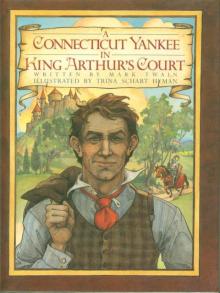 A Connecticut Yankee in King Arthur's Court
A Connecticut Yankee in King Arthur's Court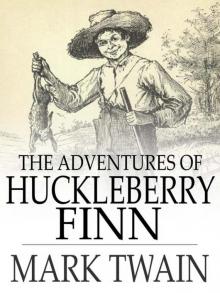 Adventures of Huckleberry Finn
Adventures of Huckleberry Finn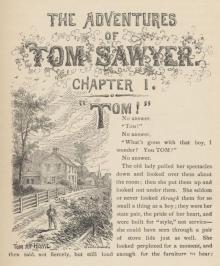 The Adventures of Tom Sawyer, Part 1.
The Adventures of Tom Sawyer, Part 1.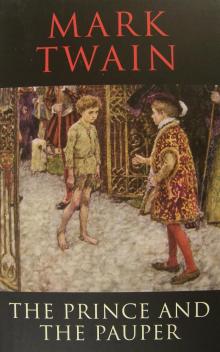 The Prince and the Pauper
The Prince and the Pauper The American Claimant
The American Claimant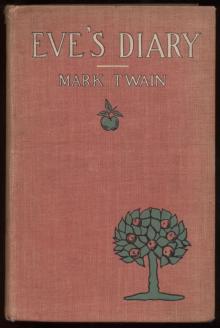 Eve's Diary, Complete
Eve's Diary, Complete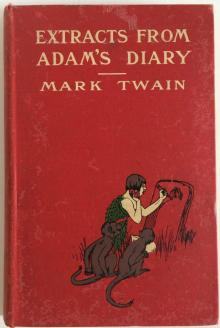 Extracts from Adam's Diary, translated from the original ms.
Extracts from Adam's Diary, translated from the original ms.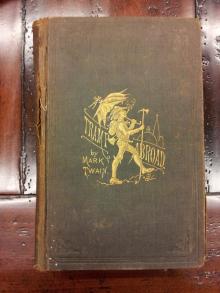 A Tramp Abroad
A Tramp Abroad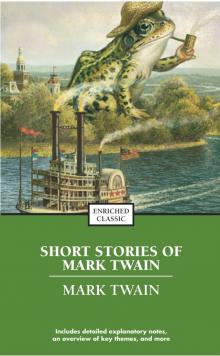 The Best Short Works of Mark Twain
The Best Short Works of Mark Twain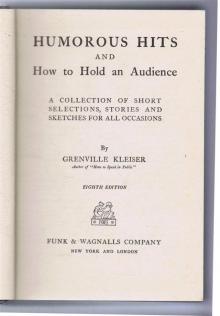 Humorous Hits and How to Hold an Audience
Humorous Hits and How to Hold an Audience The Speculative Fiction of Mark Twain
The Speculative Fiction of Mark Twain The Facts Concerning the Recent Carnival of Crime in Connecticut
The Facts Concerning the Recent Carnival of Crime in Connecticut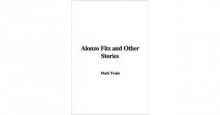 Alonzo Fitz, and Other Stories
Alonzo Fitz, and Other Stories The $30,000 Bequest, and Other Stories
The $30,000 Bequest, and Other Stories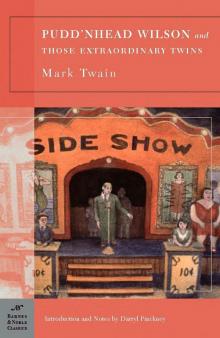 Pudd'nhead Wilson and Those Extraordinary Twins
Pudd'nhead Wilson and Those Extraordinary Twins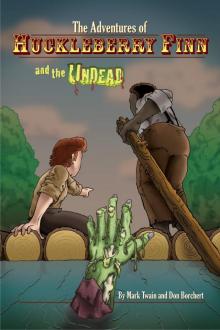 The Adventures of Huckleberry Finn and the Undead
The Adventures of Huckleberry Finn and the Undead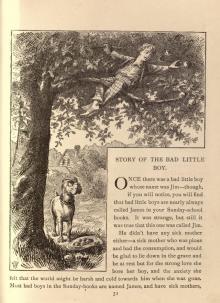 Sketches New and Old
Sketches New and Old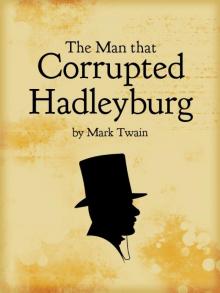 The Man That Corrupted Hadleyburg
The Man That Corrupted Hadleyburg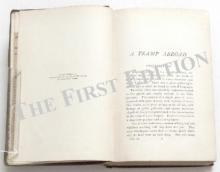 A Tramp Abroad — Volume 06
A Tramp Abroad — Volume 06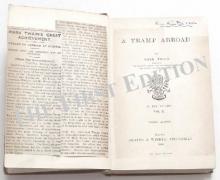 A Tramp Abroad — Volume 02
A Tramp Abroad — Volume 02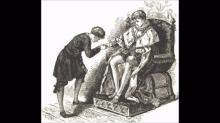 The Prince and the Pauper, Part 1.
The Prince and the Pauper, Part 1. Adventures of Huckleberry Finn, Chapters 16 to 20
Adventures of Huckleberry Finn, Chapters 16 to 20 The Prince and the Pauper, Part 9.
The Prince and the Pauper, Part 9.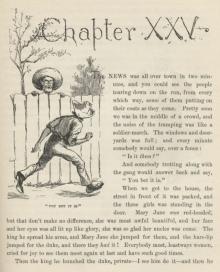 Adventures of Huckleberry Finn, Chapters 21 to 25
Adventures of Huckleberry Finn, Chapters 21 to 25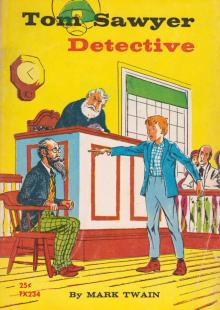 Tom Sawyer, Detective
Tom Sawyer, Detective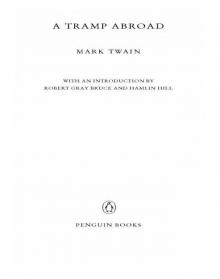 A Tramp Abroad (Penguin ed.)
A Tramp Abroad (Penguin ed.)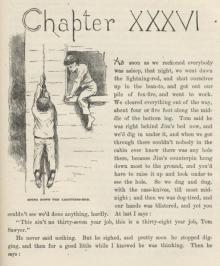 Adventures of Huckleberry Finn, Chapters 36 to the Last
Adventures of Huckleberry Finn, Chapters 36 to the Last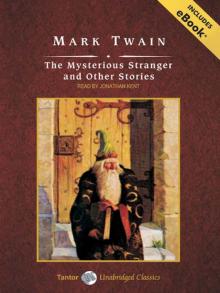 The Mysterious Stranger, and Other Stories
The Mysterious Stranger, and Other Stories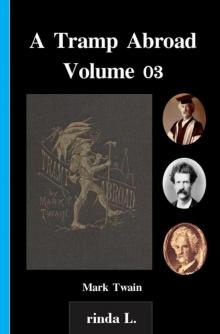 A Tramp Abroad — Volume 03
A Tramp Abroad — Volume 03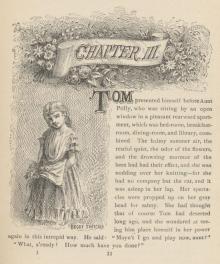 The Adventures of Tom Sawyer, Part 3.
The Adventures of Tom Sawyer, Part 3. Adventures of Huckleberry Finn, Chapters 06 to 10
Adventures of Huckleberry Finn, Chapters 06 to 10_preview.jpg) The Adventures of Huckleberry Finn (Tom Sawyer's Comrade)
The Adventures of Huckleberry Finn (Tom Sawyer's Comrade)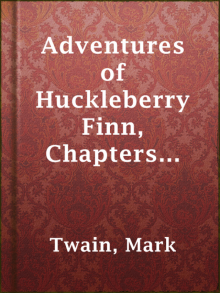 Adventures of Huckleberry Finn, Chapters 31 to 35
Adventures of Huckleberry Finn, Chapters 31 to 35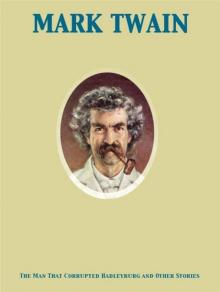 The Man That Corrupted Hadleyburg, and Other Stories
The Man That Corrupted Hadleyburg, and Other Stories A Tramp Abroad — Volume 07
A Tramp Abroad — Volume 07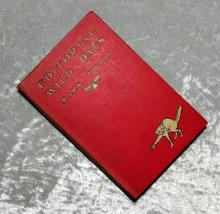 Editorial Wild Oats
Editorial Wild Oats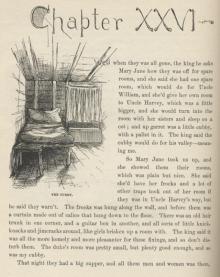 Adventures of Huckleberry Finn, Chapters 26 to 30
Adventures of Huckleberry Finn, Chapters 26 to 30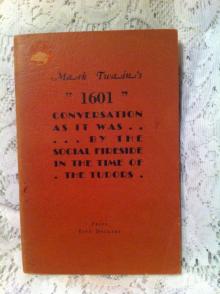 1601: Conversation as it was by the Social Fireside in the Time of the Tudors
1601: Conversation as it was by the Social Fireside in the Time of the Tudors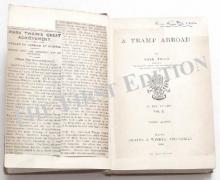 A Tramp Abroad — Volume 05
A Tramp Abroad — Volume 05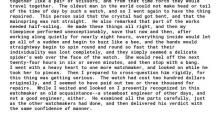 Sketches New and Old, Part 1.
Sketches New and Old, Part 1.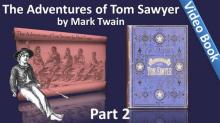 The Adventures of Tom Sawyer, Part 2.
The Adventures of Tom Sawyer, Part 2.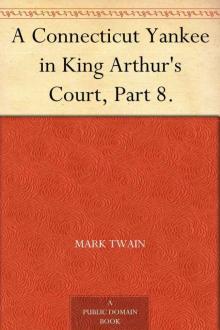 A Connecticut Yankee in King Arthur's Court, Part 8.
A Connecticut Yankee in King Arthur's Court, Part 8. A Tramp Abroad — Volume 01
A Tramp Abroad — Volume 01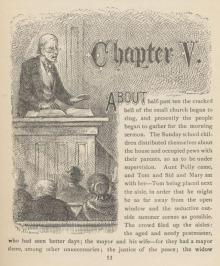 The Adventures of Tom Sawyer, Part 5.
The Adventures of Tom Sawyer, Part 5. Adventures of Huckleberry Finn, Chapters 01 to 05
Adventures of Huckleberry Finn, Chapters 01 to 05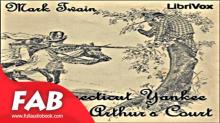 A Connecticut Yankee in King Arthur's Court, Part 1.
A Connecticut Yankee in King Arthur's Court, Part 1.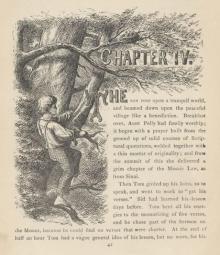 The Adventures of Tom Sawyer, Part 4.
The Adventures of Tom Sawyer, Part 4.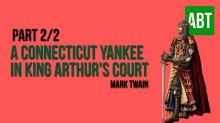 A Connecticut Yankee in King Arthur's Court, Part 2.
A Connecticut Yankee in King Arthur's Court, Part 2.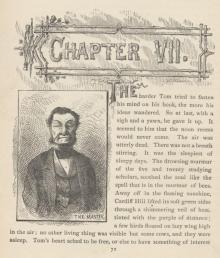 The Adventures of Tom Sawyer, Part 7.
The Adventures of Tom Sawyer, Part 7.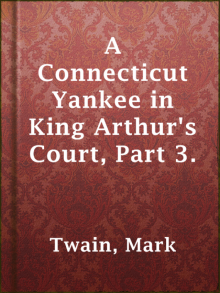 A Connecticut Yankee in King Arthur's Court, Part 3.
A Connecticut Yankee in King Arthur's Court, Part 3.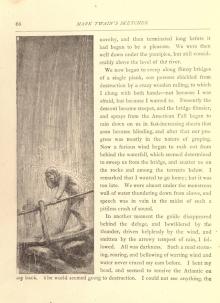 Sketches New and Old, Part 4.
Sketches New and Old, Part 4.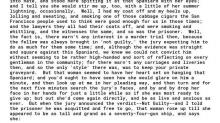 Sketches New and Old, Part 3.
Sketches New and Old, Part 3.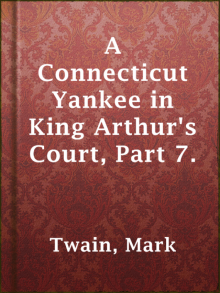 A Connecticut Yankee in King Arthur's Court, Part 7.
A Connecticut Yankee in King Arthur's Court, Part 7. A Connecticut Yankee in King Arthur's Court, Part 5.
A Connecticut Yankee in King Arthur's Court, Part 5.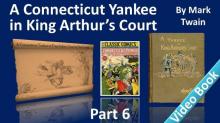 A Connecticut Yankee in King Arthur's Court, Part 6.
A Connecticut Yankee in King Arthur's Court, Part 6.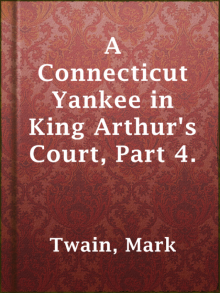 A Connecticut Yankee in King Arthur's Court, Part 4.
A Connecticut Yankee in King Arthur's Court, Part 4. Sketches New and Old, Part 2.
Sketches New and Old, Part 2.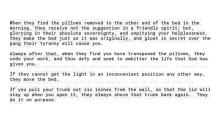 Sketches New and Old, Part 6.
Sketches New and Old, Part 6. Adventures of Huckleberry Finn, Chapters 11 to 15
Adventures of Huckleberry Finn, Chapters 11 to 15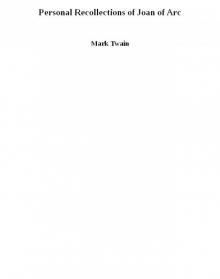 Personal Recollections of Joan of Arc
Personal Recollections of Joan of Arc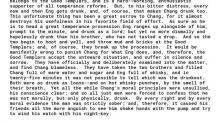 Sketches New and Old, Part 5.
Sketches New and Old, Part 5. Eve's Diary, Part 3
Eve's Diary, Part 3 Sketches New and Old, Part 7.
Sketches New and Old, Part 7.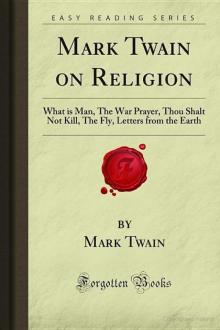 Mark Twain on Religion: What Is Man, the War Prayer, Thou Shalt Not Kill, the Fly, Letters From the Earth
Mark Twain on Religion: What Is Man, the War Prayer, Thou Shalt Not Kill, the Fly, Letters From the Earth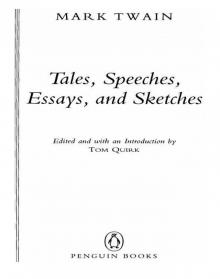 Tales, Speeches, Essays, and Sketches
Tales, Speeches, Essays, and Sketches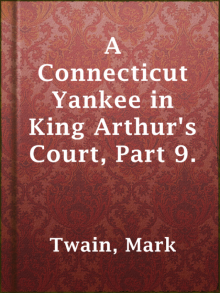 A Connecticut Yankee in King Arthur's Court, Part 9.
A Connecticut Yankee in King Arthur's Court, Part 9.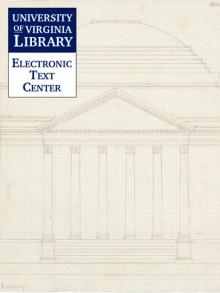 Our Fellow Savages of the Sandwich Islands (version 1)
Our Fellow Savages of the Sandwich Islands (version 1) 1601
1601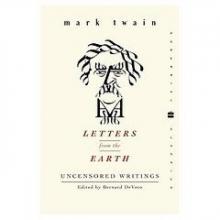 Letters from the Earth
Letters from the Earth Curious Republic Of Gondour, And Other Curious Whimsical Sketches
Curious Republic Of Gondour, And Other Curious Whimsical Sketches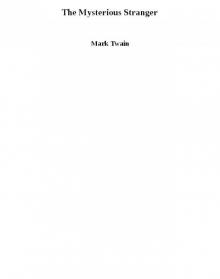 The Mysterious Stranger
The Mysterious Stranger Life on the Mississippi
Life on the Mississippi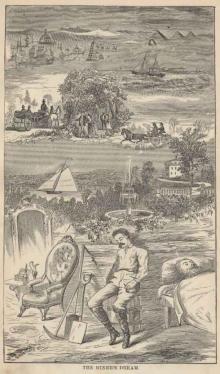 Roughing It
Roughing It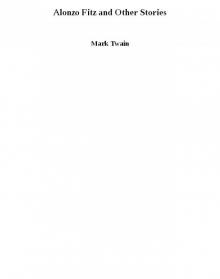 Alonzo Fitz and Other Stories
Alonzo Fitz and Other Stories The 30,000 Dollar Bequest and Other Stories
The 30,000 Dollar Bequest and Other Stories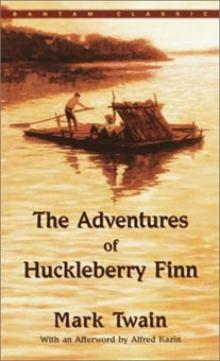 The Adventures of Huckleberry Finn taots-2
The Adventures of Huckleberry Finn taots-2 A Double-Barreled Detective Story
A Double-Barreled Detective Story adam's diary.txt
adam's diary.txt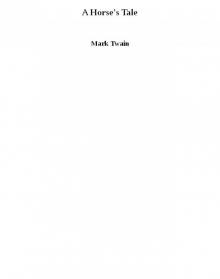 A Horse's Tale
A Horse's Tale Autobiography Of Mark Twain, Volume 1
Autobiography Of Mark Twain, Volume 1 The Comedy of Those Extraordinary Twins
The Comedy of Those Extraordinary Twins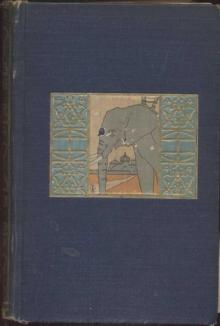 Following the Equator
Following the Equator Goldsmith's Friend Abroad Again
Goldsmith's Friend Abroad Again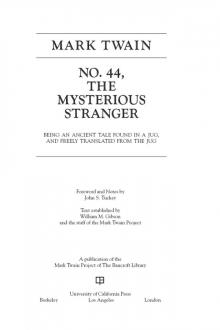 No. 44, The Mysterious Stranger
No. 44, The Mysterious Stranger The Stolen White Elephant
The Stolen White Elephant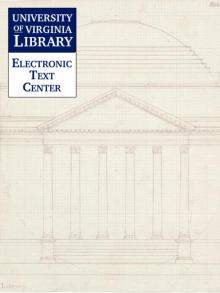 The $30,000 Bequest and Other Stories
The $30,000 Bequest and Other Stories The Curious Republic of Gondour, and Other Whimsical Sketches
The Curious Republic of Gondour, and Other Whimsical Sketches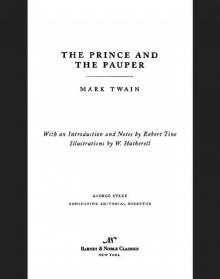 Prince and the Pauper (Barnes & Noble Classics Series)
Prince and the Pauper (Barnes & Noble Classics Series)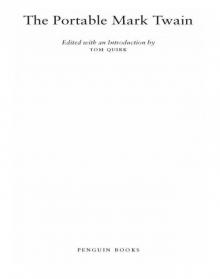 The Portable Mark Twain
The Portable Mark Twain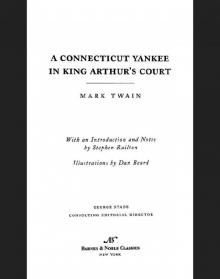 Connecticut Yankee in King Arthur's Court (Barnes & Noble Classics Series)
Connecticut Yankee in King Arthur's Court (Barnes & Noble Classics Series) The Adventures of Tom Sawyer taots-1
The Adventures of Tom Sawyer taots-1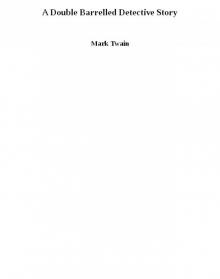 A Double Barrelled Detective Story
A Double Barrelled Detective Story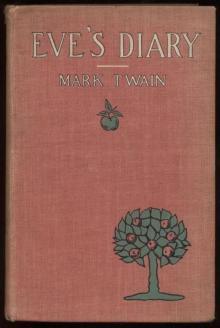 Eve's Diary
Eve's Diary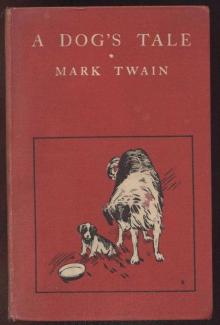 A Dog's Tale
A Dog's Tale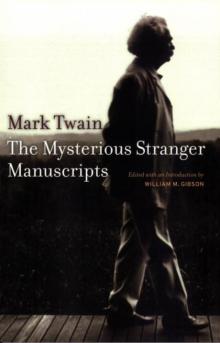 The Mysterious Stranger Manuscripts (Literature)
The Mysterious Stranger Manuscripts (Literature)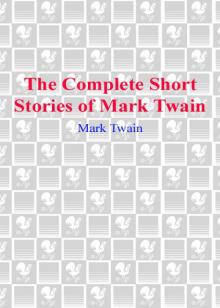 The Complete Short Stories of Mark Twain
The Complete Short Stories of Mark Twain What Is Man? and Other Essays
What Is Man? and Other Essays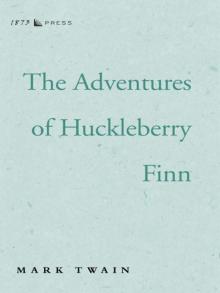 The Adventures of Huckleberry Finn
The Adventures of Huckleberry Finn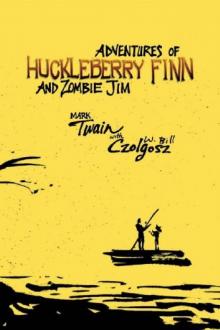 Adventures of Huckleberry Finn and Zombie Jim
Adventures of Huckleberry Finn and Zombie Jim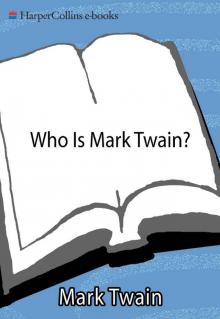 Who Is Mark Twain?
Who Is Mark Twain?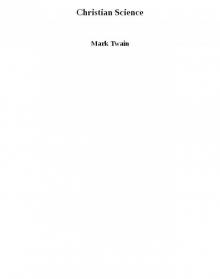 Christian Science
Christian Science The Innocents Abroad
The Innocents Abroad Some Rambling Notes of an Idle Excursion
Some Rambling Notes of an Idle Excursion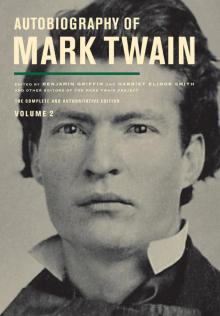 Autobiography of Mark Twain
Autobiography of Mark Twain Those Extraordinary Twins
Those Extraordinary Twins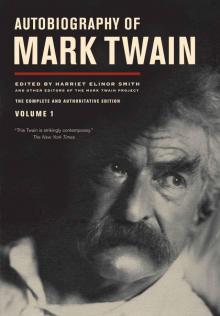 Autobiography of Mark Twain: The Complete and Authoritative Edition, Volume 1
Autobiography of Mark Twain: The Complete and Authoritative Edition, Volume 1